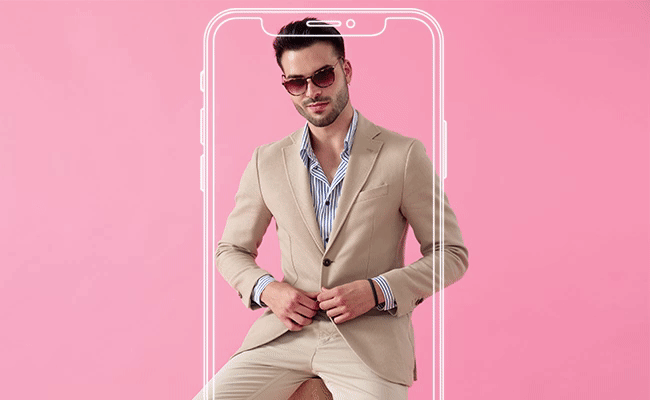
- October 06 2022
Top 15 Fashion AI Ecommerce Terms
Artificial intelligence is everywhere–and fashion is no exception. AI technology is revolutionizing the fashion industry and enhancing shopper experiences like never before. With so much new ecommerce technology on offer, it’s easy to get overwhelmed. That’s why we put together this fashion AI glossary—to shed light on 15 of the best ecommerce technology applications.
Keeping up with these trends can help you address customer concerns, increase conversion rates, and take your ecommerce brand or business to the next digital level. Let’s get started.
1. Autotagging
Autotagging is short for automated product tagging. It enables businesses to automatically tag categories and subcategories from media content. It works with both visual and non-visual attributes to streamline the cataloging process.
Autotagging solutions—like ViSenze’s smart tagging—improve product discoverability and enable businesses to react to fashion trends faster. It provides an improved experience for shoppers, and saves valuable time typically wasted on manual tagging.

2. Complete The Look
‘Complete the Look’ recommends products based on what appears in a product image. These recommendations appear on key pages and touchpoints during the shopping experience, such as on the product detail page (PDP), during checkout, or in retargeting emails following shopping cart abandonment.
For example, say clients are viewing the PDP for a leather jacket. The image depicts a model wearing the leather jacket in question, along with other items of clothing and accessories. AI-powered ‘complete the look’ technology recommends these items—the ones worn by the model—on the leather jacket PDP.
3. Computer Vision
Computer vision refers to artificial intelligence that enables software to derive meaning from digital product images. It copies how humans perceive images and videos in order to recognize and classify products.
Computer vision can be used in a variety of ways in the fashion industry, such as for inventory management, quality assurance, and product tagging. ViSenze’s smart search uses computer vision to improve search capabilities, enabling fashion retailers to help customers find what they’re looking for by delivering highly accurate results every time.
4. Deep Learning
Deep learning is a branch of machine learning that uses neural networks to perform many AI tasks. These algorithms can analyze images and text without pre-processing the data.
For example, deep learning algorithms are able to identify objects in images without training. This allows for faster categorization and classification of objects.
5. Fashion AI
Fashion AI is the umbrella term for AI solutions that enable businesses to automate manual tasks and optimize the customer experience. It provides retailers with all the information they need to understand and improve the customer journey from start to finish.
Fashion AI algorithms can predict customer behavior, as well as provide insights on-site visits, shopping habits, and purchasing preferences. Using AI solutions can help businesses improve product discovery capabilities, increase conversions, and increase average order value. For a full breakdown on fashion AI, check out how online clothing retailers can leverage AI.
6. Machine Learning Recommendations
Product recommendations for ecommerce are another way that AI is taking the fashion world by storm. AI-powered solutions are able to provide product recommendations that consider a wide variety of factors, such as browsing history, industry trends, and shopper preferences.
ViSenze’s Smart Recommendations is one such solution. The AI-powered recommendation engine provides hyper-relevant suggestions that can be placed at key touch points throughout your website, enabling fashion retailers to increase ecommerce conversions by 10% and revenue per session by 8%.
7. Neural Networks
Neural networks refer to the connections made in the brain when someone learns something new, but it’s also a method used in artificial intelligence. AI neural networks aim to process and analyze information similarly to the human brain.
Where the human brain has neurons, AI neural networks have units. These units are split into three categories: input, hidden, and output. Input units receive information, the hidden units process the information, and the output units communicate those learnings. The learning is given feedback to determine if the information is correct or incorrect, and the concept solidifies.
This AI methodology underpins many different fashion AI capabilities, including computer vision and AI-powered product recommendations. It helps with advanced searches, data-driven recommendations, sales forecasting, and more.
8. Omnichannel Communication
An omnichannel communication approach involves interacting with your users through a variety of communication channels. Through a multichannel strategy, fashion retailers are able to guide customers through the buying process to encourage a purchasing decision.
Omnichannel communication enables ecommerce brands to connect with users on a number of different platforms, such as email, social media, and website chatbots. Need a break? Learn more about AI in retail with our Future of Fashion report.
9. Product Tagging vs Image Tagging
Tagging refers to assigning categories to different products in a catalog. Tags describe the product with labels like color, size, use, and so on. Ecommerce tags facilitate product search and help shoppers navigate your site to find the products they’re interested in.
There are two types of tagging to consider when looking at fashion AI—product tagging and image tagging.
Product tagging is when you tag products with relevant information that helps your product page show up in a search engine.
Image tagging refers to the process of labeling images with relevant and descriptive keywords to make them more searchable.
Smart tagging enables businesses to tag both products and images faster than ever before. By having consistent, correct, and relevant product tags, stores are able to improve their filters, product discoverability, and overall customer experience.

10. Session-based recommendations
Session-based recommendations give personalized recommendations to shoppers when previous user history is unavailable, they don’t have a profile, or their search interests change over time. They have the ability to understand short-term interest styles and user preferences in different contexts.
Session-based recommendations are increasingly key to fashion brands as they prepare for a cookieless future. They enable online fashion retailers to provide personalized recommendations without gathering traditional cookies—which are being phased out.
11. Shop The Look
‘Shop the Look’ uses visual recognition technology to help customers find primary and secondary products in photos. It enables ecommerce brands to place product recommendations based on what customers are looking at online.
It empowers retailers to capitalize on that visual content and helps customers shop the exact items they see. Shop the Look makes online looks shoppable, regardless of where they’re from.
12. Social Commerce
Social commerce refers to the buying and selling of goods or services within a certain social media platform. It uses AI technology—such as computer vision and smart tagging—to enable shoppers to make purchases from within their favorite social media platform.
Social commerce expands social media from its traditional role and encourages users to complete an entire buying cycle without ever leaving the app.
13. Thematic Tagging
Thematic tagging involves tagging images by the themes associated with them. It refers to the process of assigning tags or labels to each product to help describe and categorize its position in an inventory. Thematic tagging helps customers who search for products using thematic queries, such as ‘party dress’ or ‘winter coat’. It enables fashion ecommerce brands to take product discoverability to the next level by adapting to an alternative search process.
14. Visual Search / Image Search
Ecommerce visual search enables customers to find what they’re looking for using images instead of text-based searches. Images can come from a variety of sources, such as social media, fashion photos, and even the customer’s camera roll.
Consumers can take their real-world and digital inspirations and find the products that best match those styles. Visual search solution’s, such as Smart Search, can help lift ecommerce conversion rates by 24%, and increase AOV by 15%.
15. Voice Search
Voice search is exactly what it sounds like—enabling customers to search an ecommerce inventory with their voices. It’s a faster and more accessible way for online shoppers to browse fashion ecommerce stores. Catalog enrichment for voice search is essential in fashion ecommerce—41% of adults use voice search every day. Consumer habits are changing, and adapting to these shifts is essential for fashion retailers.
Fashion AI tech is here
Fashion tech is no longer the future, it’s right now. It’s essential that fashion brands and retailers optimize the online experience for shoppers.
ViSenze enables ecommerce brands worldwide to better meet customer needs with AI-powered ecommerce solutions. Whether it’s optimized product tagging, powerful visual search capabilities, or highly-personalized product recommendations—ViSenze has the solution to meet your ecommerce needs.Request a demo today to find out how ViSenze can help you improve the online experience for shoppers.

